Income-Verified Student Loans: Everything You Need to Know Before Applying
Learn how income-verified student loans work, who qualifies, and how they differ from other financial aid options. Full guide in 700 words.
Smart financing starts with verified income.
Navigating student loans can feel overwhelming. With so many types available, it’s essential to understand which ones best fit your situation.
Income-verified student loans are designed to match your repayment to your financial reality—making them a compelling choice for many students.
These loans use your income information to determine eligibility, terms, and in some cases, payment structures. Unlike traditional private or federal loans that rely heavily on credit scores or cosigners, income-verified loans provide a more personalized and accessible solution.
But how do they work, who can qualify, and what are their advantages and drawbacks? Let’s explore every angle so you can make an informed choice about financing your education.

What Are Income-Verified Student Loans?
Income-verified student loans are a category of educational loans where your eligibility and/or repayment terms are based on your current income.
In many cases, these loans come with flexible repayment options that adjust over time, especially if your financial situation changes. The goal is to make repayment more manageable and reduce the risk of default.
Some of these loans are offered by government-backed programs, while others are designed by private lenders who cater to borrowers with low income but strong academic or career potential.
Key Features and Benefits
Here’s what makes income-verified student loans unique:
- Income-Based Eligibility: Your ability to repay is judged by your income level, not just your credit history.
- Flexible Repayment Terms: Some loans come with graduated or income-driven repayment options from the start.
- Lower Risk for Borrowers: Since payments may scale with income, you’re less likely to fall behind if your earnings are modest.
- Accessible Without Cosigner: In many cases, especially with federal income-driven plans, no cosigner is needed.
These features make income-verified loans ideal for students who are just beginning their financial journey or who may not have strong credit yet.
Who Offers These Loans?
There are two main sources of income-verified loans:
- Federal Student Loans with Income-Driven Repayment (IDR): While not income-verified at origination, these loans shift into income-based repayment after graduation. Plans like REPAYE, PAYE, and IBR fall into this category.
- Private Lenders with Income-Based Models: A small but growing number of private lenders now offer loans where income verification helps set interest rates or limits how much you can borrow.
Some nonprofit organizations and state-sponsored loan programs are also experimenting with income-sharing agreements (ISAs), where repayment is a fixed percentage of your income for a set number of years.
Pros of Income-Verified Student Loans
- Tailored to Your Budget: You won’t be locked into payments you can’t afford.
- Improved Access: If you have low income or no credit history, you still have a path to funding.
- Reduced Financial Stress: Payment amounts that match your income reduce pressure post-graduation.
- Forgiveness Potential: Federal income-driven plans may lead to forgiveness after 10–25 years.
Potential Drawbacks
- Longer Repayment Terms: Smaller payments could extend the life of the loan.
- Interest Accumulation: Lower monthly payments might not cover interest, causing balances to grow.
- Annual Paperwork: You’ll need to verify your income each year, or payments could revert to higher levels.
- Limited Private Options: Not many private lenders offer this model yet, limiting your choice.
How to Qualify
For federal loans with income-driven repayment, you’ll simply need to apply through FAFSA and later opt into an IDR plan after leaving school.
To qualify for private income-verified loans, you’ll typically need to:
- Provide recent pay stubs or tax documents
- Show proof of enrollment
- Have a realistic debt-to-income ratio
- Demonstrate academic or career potential (varies by lender)
Application Tips
Start with federal student aid. Even if your income is low, you may qualify for grants or subsidized loans before considering income-verified options.
If exploring private lenders, compare terms carefully. Look for transparency on how income is calculated and how payments are structured over time.
Ask if there’s a cap on total repayment, especially with income-sharing models, to avoid paying more than you borrowed.
Final Thoughts
Income-verified student loans provide a much-needed bridge between affordability and access. They’re designed for students who need support today but are confident in their future earnings.
Whether you’re an undergrad, grad student, or returning learner, this type of loan could offer the flexibility and fairness you need to succeed.
Be sure to compare all options and consult a financial aid advisor to find the loan that aligns with your long-term goals.







